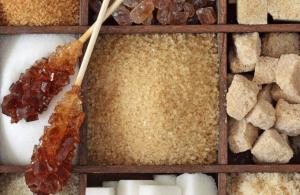Isabella grapes belong to the table-technical varieties. Few people like to eat its fresh fruits, but the wine from Isabella is excellent. Thanks to the variety of recipes at home, the nursery owner can make any wine from Isabella berries - red, white, rose. The product is a natural expectorant and warming agent. In winter, if you have a cold, you can make mulled wine from it.
In addition to wine, jams, compotes, jellies, preserves, juices, and frozen purees are made from Isabella grapes. The highlight of the festive table will be the no-bake “Grape” cake.
Value of Isabella grapes
 The main advantage of the Isabella variety is the rich harvest that the shrubs produce annually. Plants take root in different conditions and grow strongly. Attractive bunches and grapes have commercial value. Isabella has taken root in winemaking thanks to simple recipes for producing homemade wine with a rich color and sour taste, because its juice has sufficient acidity and sugar content.
The main advantage of the Isabella variety is the rich harvest that the shrubs produce annually. Plants take root in different conditions and grow strongly. Attractive bunches and grapes have commercial value. Isabella has taken root in winemaking thanks to simple recipes for producing homemade wine with a rich color and sour taste, because its juice has sufficient acidity and sugar content.
With mass cultivation of the crop, 60–75 centners of crop can be obtained from each hectare of plantings. For a good owner, these indicators are much higher, which allows him to prepare alcohol in any volume.
In the European Union, wine made from Isabella grapes is prohibited for production and consumption. Scientists believe that the increased content of methyl alcohol and hydrocyanic acid in alcoholic beverages can be harmful to human health. When creating intoxicating drinks with your own hands, Isabella remains a popular culture, and in order for the wine from its berries to be beneficial and not harmful, the product should be consumed in moderation, no more than 300 ml per day.
When and how to harvest Isabella grapes for wine
 Understanding the best time to harvest Isabella grapes makes it easier to know information about their ripeness. It ripens completely by the last ten days of October. But in order for the fruits to acquire sufficient sweetness, it is recommended to prepare Isabella’s grape raw materials for wine 1 week after the onset of technical maturity, and the harvest must be harvested before the first frost and in dry weather.
Understanding the best time to harvest Isabella grapes makes it easier to know information about their ripeness. It ripens completely by the last ten days of October. But in order for the fruits to acquire sufficient sweetness, it is recommended to prepare Isabella’s grape raw materials for wine 1 week after the onset of technical maturity, and the harvest must be harvested before the first frost and in dry weather.
The crop produces fruits of a dark red hue. When ripe, their taste is pleasantly sour and their skin is tough. To prepare high-quality Isabella wine at home, it is important to carefully examine the berries and remove rotten, unripe and dry raw materials. It is impossible to wash suitable fruits, since wild yeast lives on their surface. Their task is to start the fermentation process.
Wine recipes from Isabella
When the berries are sorted and the rejects are discarded, all that remains is to stock up on sugar and prepare the bottle for fermentation. Self-fermentation of unwashed raw materials allows you to do without an alcohol base. The product turns out natural, transparent, fortified.
Classic recipe for wine from Isabella grapes
The simplest recipe for making grape wine from Isabella's berries has become a classic and served as the basis for improved technologies for creating the drink. To complete it you will need only two ingredients - grapes and sugar (proportion in kilograms 10: 3). The raw materials must be unwashed, but dry and covered with a gray-gray coating with yeast.
How to make a classic version of Isabella wine:

Fortified wine Isabella
Can Isabella wine be strong, and what recipe is there for making it at home? Surely this question is asked by many lovers of “hot” drinks. Of course, experienced winemakers are familiar with this technology. And in order to make fortified wine Isabella, they advise taking 3 components:
- Berries – 5 kg;
- Sugar – 600 g;
- Alcohol – 1 l.
The recipe may contain more sugar, but not less. The optimal ratio for adjustment is 100 g of sand for every liter of juice.
 What you need to do to make Isabella fortified wine at home:
What you need to do to make Isabella fortified wine at home:
- The pulp of crushed unwashed grapes is kept in a glass jar for 3 days. Then sprinkle with sugar;
- The vessel is closed and taken out to a warm room for 2 weeks for fermentation;
- The fermented mass is filtered through 3 layers of gauze;
- The transparent liquid is kept in a dark, cool room for 2 months;
- Young wine is fortified with alcohol and infused for 2 weeks;
- Alcohol is bottled. Store the container in a horizontal position.
Fortified wine stimulates the appetite and improves digestive processes. It is consumed chilled with meat dishes.
Quick recipe for wine from Isabella grapes
If you don’t have time for long-term winemaking, the simplest recipe “For the Lazy” will help you quickly make delicious wine from Isabella’s aromatic berries. Let's look at its features:
- The main raw materials are combined with sugar 5:3 and left for 1 week;
- On day 8, the composition is diluted with 10 liters of distilled water and waited for 1 month;
- The intoxicating liquor is filtered through multilayer cheesecloth and bottled;
- Store wine in a cool place.
Water technology
You can prepare a large amount of wine from Isabella’s raw materials at home by adding water to the berry mass. The strength of such a drink will be less than usual.
Step-by-step process of winemaking on water:

Found a mistake? Select it and click Shift + Enter or
Not all grape varieties can be used for home winemaking. Those varieties that are suitable for use as feedstock differ in different quality characteristics. One of the best options for homemade wine is the Isabella grape; winegrowers know this, so they plant it in their gardens and summer cottages. Let's look at how to make homemade wine from Isabella grapes using several examples.
Features of raw materials
The grapes must be harvested in dry weather before the first frost. There should be a bluish coating on the berries; it contains wild yeast, which is necessary to activate the natural fermentation process.
It is important that the berries are ripe; spoiled and dry grapes should be discarded immediately; they will negatively affect the taste of the finished homemade drink.
Wine made from Isabella grapes is a healthy product. It has a cleansing effect, strengthens the immune system and restores vital energy. Of course, if you observe moderation and do not abuse the drink, like any alcohol. The permissible norm is from 200 to 300 ml per day.
Making wine from Isabella grapes does not involve any specific procedures. But today in the alcohol industry, Isabella grapes are not used as a starting raw material; it is believed that the finished product contains an increased level of hydrocyanic acid and methyl alcohol. But these excesses of the norm are insignificant, and if the drink is not abused, then there is no threat to health.
Isabella grapes continue to be one of the most popular products in home winemaking. This is also explained by the fact that the variety is unpretentious and produces good harvests; in addition, it is capable of fully bearing fruit even in regions with a climate that is not very favorable for such a delicate crop as grapes.
Cooking methods
Wine from Isabella grapes can be prepared at home in several ways.
 This recipe for homemade wine from Isabella grapes is not at all complicated. If you follow all the rules and preparation technology, even a novice winemaker can get a high-quality homemade drink.
This recipe for homemade wine from Isabella grapes is not at all complicated. If you follow all the rules and preparation technology, even a novice winemaker can get a high-quality homemade drink.
Ingredients:
- Grapes "Isabella" - 10 kg;
- Sugar - 3 kg.
Preparation.
Freshly picked bunches must be dry from moisture; washing grapes to prepare wine is not allowed. Together with the water, the plaque that contains wild yeast is washed off from the grapes; without this plaque, fermentation will not occur.
 We tear the grapes off the grapes and dry them on paper towels. If desired, you can leave a few branches, this will add astringency to the wine. The berries need to be crushed in an enamel bowl. A wooden pestle is suitable for this; if you don’t have one, you can mash the grapes with your hands. Do not use metal objects under any circumstances; this will promote oxidation, which will negatively affect the taste of the finished product. Cover the container with gauze or a loose cloth and put it in a warm place for 7 days. This time will be enough for the fermentation process to be fully activated. Every day, the wine wort needs to be stirred 2-3 times and the foam cap needs to be knocked down. Mix with your hands or a wooden spoon.
We tear the grapes off the grapes and dry them on paper towels. If desired, you can leave a few branches, this will add astringency to the wine. The berries need to be crushed in an enamel bowl. A wooden pestle is suitable for this; if you don’t have one, you can mash the grapes with your hands. Do not use metal objects under any circumstances; this will promote oxidation, which will negatively affect the taste of the finished product. Cover the container with gauze or a loose cloth and put it in a warm place for 7 days. This time will be enough for the fermentation process to be fully activated. Every day, the wine wort needs to be stirred 2-3 times and the foam cap needs to be knocked down. Mix with your hands or a wooden spoon.
After 7 days, strain the fermented grape juice and squeeze the pulp well through cheesecloth. The remaining cake does not need to be thrown away; it is an excellent raw material for making homemade moonshine or grape tincture. Pour the liquid into a fermentation container (bottle), add granulated sugar. We install a water seal; you can use a seal of any design (lid with a tube, a glove, or a device purchased in a store).
 The wine should ferment in a water seal for about 3 weeks until the fermentation process is complete. If a glove is placed on the bottle, it will deflate when fermentation is complete. If a lid with a tube is installed, then pay attention to the state of the liquid: sediment from the waste products of wine yeast will precipitate, the wine will become much lighter, and the release of gas bubbles will stop.
The wine should ferment in a water seal for about 3 weeks until the fermentation process is complete. If a glove is placed on the bottle, it will deflate when fermentation is complete. If a lid with a tube is installed, then pay attention to the state of the liquid: sediment from the waste products of wine yeast will precipitate, the wine will become much lighter, and the release of gas bubbles will stop.
Now it is important to drain the wine in such a way as not to disturb the sediment. This is best done with a thin hose. Pour the finished wine into a storage container, seal it tightly and place it in a horizontal position in the cellar, with minimal access to light. After a month you can taste the wine. If sediment has formed in the bottles again, the wine made from Isabella grapes will need to be removed from the sediment again and stored for another month.
Recipe No. 2 (fortified wine) 
This recipe for wine from Isabella grapes is suitable for those who prefer stronger alcohol. The preparation is quite simple. As a basis, we take ready-made wine (5 liters), prepared in the classical way (see recipe No. 1). To give it strength, you will also need to add sugar and alcohol. So, pour some wine, heat it and add sugar. Calculation: per liter of wine - 20 grams per liter. Pour the syrup into the wine, mix, cork, and put it in the cellar for 30 days. After this procedure, add alcohol to the wine and you can taste the fortified homemade drink.
The Isabella grape variety is a technical variety, which means it is used primarily in the preparation of drinks. All winemakers should know how to make wine from Isabella grapes. This drink is in the forefront among lovers of good wine. We will show you a classic recipe for Isabella grape wine, which we hope you will take note of.
Isabella is perhaps the most popular grape variety used in making wine. This is partly explained by the fact that it is quite unpretentious in cultivation (Climbing Isabella can be found on every second summer resident on the site). Many people grow Isabella for decorative purposes.
In terms of taste, the berry of this variety is far from in first place, but the juice or wine turns out amazing. Not every grape variety can be used to make wine, but even amateur winemakers know how to make Isabella wine at home. But despite this, there are many variations in the technology for preparing an alcoholic drink. Let's try to find the best recipe for Isabella wine.
You can make delicious wine either with or without yeast (due to the wild yeast that is present on the berries). Dry and semi-sweet wine is prepared from Isabella. Homemade Isabella wine has many positive qualities besides taste. Supporters of drinking a glass of red for appetite see the drink as solely beneficial if consumed in moderation. Of course, there is also the opposite point of view. But that’s not about that now. Let's talk about how to make wine from Isabella grapes so that even the harshest critics will appreciate it.

A simple recipe for Isabella grape wine
Before preparing the wine itself, you must fulfill a number of requirements so that the result meets your expectations. The main one is the quality of the ingredients. Isabella must be ripe - not green or rotten. Otherwise, even a couple of bunches of low-quality raw materials can ruin the entire final product. Particular attention should be paid to the container in which the fermentation process will take place. In addition to the obvious cleanliness of the container, there are requirements for the material from which it is made. So, to make homemade wine from Isabella grapes we need the following:
Ingredients:
- Isabella grapes
- Water (optional, but not more than 1/3 of the volume of grapes)
- Sugar - 200g. for 1 liter of wine
Tools:
- Containers for fermentation
- Medical glove (for containers with a narrow neck)
- Plastic tube (for expressing the finished product)
- Gauze
Let's figure out what it should be mash made from sugar and yeast, proportions, quantity and quality of ingredients. .
Distilling moonshine from mash is not a tricky task, but here’s how to do it jam mash at home so that it turns out to be a really tasty drink, we read in our article:
How to make wine from Isabella grapes? Description step by step:
- .Preparation. Making homemade wine from Isabella grapes begins with sorting the grapes. We separate the berries from the branches, remove rotten grapes and too green ones. Foreign debris in the form of leaves and sticks is not allowed. Grapes should not be washed. This action will wash away the wild yeast that is necessary for the natural fermentation process (without the use of additional ingredients). If the berries are excessively dirty, it is better to simply wipe them with dry gauze or a rag. All utensils must be washed thoroughly.
- Squeezing. Place the pre-selected berries in a deep container. The best container is a large wooden or enameled bowl. From the berries, by pressing, we obtain a pulp (pulp). Crushing grape seeds should be avoided. Their bitterness will spoil the taste of the drink. Therefore, in this process it is better to use only clean hands. If there are a lot of grapes, then you can do it with bare feet. This is exactly how grape wine is prepared in ancient Greece.
- Pre-fermentation. The current stage is the main and longest in terms of time in preparing homemade wine from Isabella. To reduce the acidity of the final product, you can add a little water. But no more than a third of the volume of grapes. You can do without water at all. Leave the resulting pulp for 5 days in a container in a warm room to ferment. Add 50 g of sugar for each liter of raw material, mix thoroughly. The fermentation process will be accompanied by abundant release of carbon dioxide. It can be noticed by the presence of bubbles in the liquid or the inflating of a medical glove pulled over the neck of the container (if the appropriate container is used). To prevent the glove from falling off the neck, small holes are made at the fingertips for the outflow of CO2. Foam may form. We wait for fermentation to complete and the glove to deflate. If a medical glove is not used, a lit match can be used to determine the end of fermentation. Just bring it to the surface. If it goes out, carbon dioxide is still released, which means fermentation is still going on. Otherwise, we move on to the next stage.
- Long fermentation. Add the remaining sugar at the rate of 150g. for every liter of wine. This volume can be varied depending on taste preferences. We mix our future wine and pour it into a container for further fermentation. To prevent Isabella grape wine from turning into vinegar, you need to limit exposure to air. For this, medical gloves will also help us, or the container must at least be covered with a lid. The fermentation process usually lasts a month.
- Sludge drainage. After 30 days, homemade wine from Isabella grapes can be considered ready. All that remains is to carefully drain the resulting drink from the sediment using a flexible plastic tube. You can do without this device. But it will be more difficult to get rid of excess impurities. After this, the young wine must be filtered through cheesecloth several times. If, after this procedure, sediment forms again over time, strain the wine again.
- Quiet fermentation. It is a known fact that the older the wine, the better it is. After you have bottled young wine, do not drink it immediately. This drink is best left in a cool, dark place for another couple of months. After this, the homemade Isabella wine will take on its final taste.

As you can see, making wine from Isabella grapes at home is not so difficult. The main thing is to be patient and not to do everything in haste. We have presented to your attention a classic recipe for Isabella wine. At the last stages, after fermentation, you can add additional components to the wine to taste, which are not presented above in the recipe.
Some people add herbs to add a special flavor. Some people use natural or identical natural food flavors for Isabella wine. Don't think that this will make the drink worse.
Can I use it? alcohol on the Dukan diet? At what stages is this acceptable? What to do if you violated these prohibitions and allowed yourself too much:
Video: homemade wine from Isabella
For all those who have not finished reading the recipe “how to make Isabella wine at home” or have questions about the preparation technology, we invite you to familiarize yourself with two videos that you can also use to make your own Isabella wine at home.
Many summer residents grow different varieties of grapes on their plots for pleasure or tasty berries. But homemade wine from Isabella grapes can become not just a decoration for your table, but also a treat for friends, as well as an excellent idea for starting your own, albeit small, business.
Why this particular variety?
The alluring smell of this grape variety makes the wine bouquet unique and recognizable!The secret is quite simple; Isabella wine turns out to be especially aromatic and rich in taste and color. The grape variety itself has a number of advantages:
- The grapes of this variety survive well in the harsh climatic conditions of the country, and its clusters have an attractive appearance.
- Its berries contain a high percentage of sugar and juice - accordingly, it makes a wonderful fresh dessert. And an aromatic, homemade wine with a rich, somewhat sour, but bright flavor characteristic of this variety is an excellent addition to the table.
- High yield means you can make more wine at home, without compromising its quality.
That is why Isabella is so popular among “home winemakers”! Now is the time to move on to considering recipes for making homemade wine from Isabella grapes.
Technology for making homemade wine - what is worth knowing?
Making Isabella wine at home is a simple process, but it has its own characteristics, which should be taken into account in the production of an aromatic drink.
 The grapes are ripe. All you have to do is stock up on the necessary attributes and patience.
The grapes are ripe. All you have to do is stock up on the necessary attributes and patience. First of all, you should prepare a container in advance - a bottle sufficient for fermentation of the wine material, as well as a special water seal that will remove air from the container during the fermentation of the wine. You will also need grapes, sugar and alcohol, and only then bottles into which the finished product will be poured.
After collecting and processing grape bunches, spoiled berries and leaves are sorted out, but you should not wash it before storing it. It is the unwashed berries and the microorganisms on them that will accelerate the fermentation process, acting like yeast, preventing the wine material from souring and spoiling. If you want, you can simply wipe the berries with a dry towel, but do not wash them under running water.
 Place the grapes in a container to obtain the juice-containing mass
Place the grapes in a container to obtain the juice-containing mass The preparation of Isabella wine at the very beginning according to the recipe involves obtaining pulp. To do this, you need to crush the berries using a press or, if you don’t have one, with a regular crush. Strain and use in the future to make wine.
 Or you can use the proven old-fashioned method of obtaining pulp
Or you can use the proven old-fashioned method of obtaining pulp Next, the recipe for making homemade wine stipulates that the resulting wine material is poured into a bottle by a third and, adding sugar, in the amount specified in the recipe, is placed in a dark place for fermentation. The neck itself is covered with a rubber glove and that’s it. Below we will look at the most common recipes for homemade wine from Isabella grapes.
Recipes for homemade wine from Isabella grapes
When the harvest has been harvested and all the spoils have been selected, all that remains is to get acquainted with the basic recipe for preparing a homemade drink. The production of wine itself is simple and uncomplicated, and if you make it yourself, it will be even tastier. What wine recipes can a novice winemaker adopt in order to get an aromatic, natural drink of Bacchus?
Recipe No. 1. – Classic cooking recipe
The presented recipe for wine from Isabella grapes is simple: at the very beginning, the juice is squeezed out of the grape bunches and allowed to ferment in a dark place until sediment appears at the bottom. After this, the homemade wine is carefully bottled so as not to disturb the sediment.
The resulting young and still playing drink will be sour - it is worth adding sugar to it for sweetness at the rate of 100-150 g. per liter of wine material. Mix everything thoroughly and seal it tightly so that air and moisture do not pass through, and place it in a dark, cool place for a month.
A simple recipe when, after a month, the wine is filtered and bottled, tightly closed and sent to the cellar for further storage. It is easy to make wine using this recipe, and according to this recipe its strength is 11-13 revolutions, marked by a sweet-tart, rich taste.
Recipe No. 2. – With sugar and yeast
How to make Isabella wine at home so that it doesn’t go to waste? Use a recipe with added sugar and yeast. The technology for making pulp differs significantly. The berries are washed, crushed, but the pulp itself is not squeezed out, but everything is poured into a large saucepan and over low heat, but not brought to a boil, but heated to 75 degrees.
After removing from the heat, cool and add a 3-day-old 2% yeast solution, cover the container and pass everything through a press using a press, then pass through a colander or sieve. Sugar is added to the resulting juice - 100 grams per liter is enough, the container is covered with a rubber glove or a water bottle and allowed to stand and ferment for several months.

After the allotted period, drain the liquid without disturbing the sediment and add sugar again at the rate of 150-180 g per liter, after which it is finally bottled. The container is sealed and stored in a well-ventilated, cool and dark room, placed horizontally on shelves.
Recipe No. 3. – Fortified wine from Isabella
You won’t be able to take a simpler approach to making a homemade fortified drink from grape berries using this recipe, since it requires strict adherence to proportions. To prepare it you will need 10 kg. grapes, 3 kg of sugar and the production process begins with the unwashed bunches being sorted out, placed in an enamel container and kneaded. Afterwards, it is covered with gauze and the workpiece is left to ferment for 5 days - it must be placed in a dark, cool place. The mass should be stirred periodically for a better fermentation process.

When the fermentation process is in full swing and the skins and grains rise to the top, the wine must be strained and sugar is added to the resulting juice. Everything is mixed well and poured into glass bottles for subsequent fermentation - in this case, the neck of the container is covered with a rubber glove, after first pricking holes in the fingers with a needle. This way you will know that the fermentation process is complete and the wine is ready.
This recipe for Isabella wine provides that at room temperature the wine material will ferment for about 3-4 weeks - until the glove comes down. Afterwards, carefully pour the fermented wine without disturbing the sediment - leave it to ferment for another couple of weeks. After a month, you can finally bottle it, cap it tightly and send it to the cellar - by the New Year you can taste the results of your labors.
Recipe No. 4. – Recipe for wine with added water
Homemade wine Isabella in this version of the recipe in its technology involves adding clean water to the grape pulp and it is due to this that a larger amount of wine is obtained, but the strength of the homemade product will be lower. How to prepare wine according to this recipe - follow these steps:
- After collecting the berries and sorting them, selecting leaves and debris of dried and spoiled fruits, the resulting wine material is placed in an enamel container. Next, water is added - the calculation in this case is simple, when 30-35% of water and sugar are taken from the total mass of the wine material, based on 1 liter.. 40 grams each.
- Next, everything is thoroughly mixed in the container itself, then placed in a dark place for 5 days for natural fermentation. During this time, the mass itself should be stirred periodically and destroy the foam cap, allowing access to oxygen and thus accelerating the fermentation process.
- After the allotted time has passed, the pulp is separated from the juice by simply straining and squeezing it through cheesecloth. Next, the squeezed liquid is simply mixed with water - as noted above, it is taken no more than 35% of the volume of juice, and this is how you get that same grape must.
- The resulting wort is poured into a glass container - it is filled no more than a third and the neck is sealed. But here it is worth remembering that the hole is not sealed with a rubber glove, but with cotton wool, which will allow air to pass through, but at the same time retain the foam formed during the fermentation process.
- When the fermentation process of the wort proceeds more calmly, the recipe for making wine stipulates that the container itself should be sealed with a glove or a lid with small holes for gas to escape. As a rule, they are kept until the juice itself becomes light and the dregs precipitate. Only after this the top is carefully drained, without stirring the sediment into the bottles - sugar is added to the finished product at the rate of 200 per liter of wine.
- After this, the wine material is returned to the bottle and allowed to stand for another 1-1.5 months. During the allotted time, it is worth pouring it several times, and thus removing the sediment - in the end you will get a light wine that can be bottled. They are tightly sealed and placed in a cellar or refrigerator.
Wine “Isabella” is named after the red grape variety of the same name, which is grown by many of our compatriots. Despite the fact that professional winemakers speak negatively about this grape, if you follow the production technology, you can get good homemade wine from it.
Isabella belongs to the table-technical varieties. These grapes are usually not consumed fresh; they are used to make juice or wine. Isabella has become widespread in Russia due to its frost resistance and good yield in humid climates.
 Isabella grapes
Isabella grapes Attention! Wine made from Isabella grapes is prohibited in the European Union because it contains quite a lot of hydrocyanic acid and methyl alcohol, this is due to the characteristics of the variety. In order not to harm your health, I advise you to drink no more than 200-300 ml at a time.
Ingredients:
- grapes – 15 kg;
- sugar – 100-200 grams per liter of juice;
- water – 50-500 ml per liter of juice (in some cases).
Water is needed only to reduce acidity if the grapes grew in unfavorable conditions. In all other cases, diluting the juice with water spoils the taste of the wine.
Recipe for wine from Isabella grapes
1. Harvest. Fruits of any size are suitable, the main thing is to remove green, rotten and moldy berries. Another important note: grapes cannot be washed; very dirty fruits can be wiped with a dry cloth. The fact is that bacteria and fungi live on the surface of the grapes, which are natural yeasts that ensure fermentation.
2.Obtaining grape juice. At this stage, the grapes are crushed. This can be done by hand or in any other way. Each berry must be completely crushed, only then will it release its juice. It is very important not to damage the seeds, otherwise the finished wine will be bitter.
The result is grape slurry, which in the language of winemakers is called pulp. Every 6-8 hours, stir the slurry with a clean hand or a wooden stick, knocking off the “cap” of skin and pulp from the surface to prevent souring. 3-4 days after chopping the berries, the pulp should be strained through a colander (large sieve) or squeezed through cheesecloth.
Depending on the region where the grapes are grown and weather conditions, the juice may be too sour. The normal acid content in wine is 4-6 grams per liter, but even in ripe Isabella the acidity sometimes reaches 12-15 grams per liter. The problem is that it is impossible to determine this parameter at home without a special device (pH meter).
If the taste of the juice stings your tongue or makes your cheekbones ache, you should add 20-500 ml of water per liter of juice. You should not heavily dilute the wort with water, since the acidity will also decrease when adding sugar.
3. Fermentation. First you need to prepare the container. It is better to use glass bottles of 5 and 10 liters, pouring grape juice into them. The containers must be perfectly clean and dry; they are filled with juice to no more than 2/3 of the volume, leaving free space for fermentation.
Then a water seal is placed on the neck of the container with juice. The design is shown in the figure. An alternative option is a medical glove with a hole made with a needle in one of the fingers. Separately, you should take care of the tightness of the cork; it should not allow air to pass through, otherwise you will get vinegar instead of wine. To ensure sealing, it is advisable to seal the plug with plasticine.
 Isabella under the water seal
Isabella under the water seal 
The juice is transferred to a dark room (or covered) at a temperature of 16-22°C. Fermentation will also occur at higher temperatures (up to 30°C), but then I recommend filling the container only halfway, otherwise it may not withstand the gas pressure and rupture.
The amount of sugar depends on the type of wine. The best option is from 100 to 150 grams per liter of juice. In this case, it is advisable to divide the addition of sugar into 3 stages. Before installing under the water seal, sweeten the juice 50% of the planned amount.
After 4-5 days, add another batch (25%). To do this, remove the water seal, pour 0.5 liters of fermenting juice per 1 kg of added sugar through a straw, and dilute the sugar in the juice. Pour the resulting syrup back into the wort, then install a water seal. After 4-5 days, repeat the procedure, adding the remaining 25% sugar.
The fermentation process of wine from Isabella grapes lasts 35-70 days. When the shutter stopped releasing gas (the glove deflated), the wine became lighter, and a layer of sediment appeared at the bottom, which means fermentation is over.
Attention! If fermentation lasts longer than 55 days, you need to drain the wine through a straw into another container without sediment, and again put it under a water seal for further fermentation, otherwise bitterness may appear from sitting on the sediment for a long time.
4. Stabilization of taste and aging. If the Isabella wine turns out to be too sour, you can correct it with sugar (to taste). For lovers of fortified wines, I advise you to add 2-15% of vodka or alcohol from the volume of the drink. Fixed wine stores better, but it tastes harsher.
Pour the young wine into aging containers and seal tightly. If sugar was added for sweetening, keep it under a water seal for the first 7-10 days, then seal it. It is advisable to pour wine to the top to minimize contact of the drink with air.
Transfer containers to a refrigerator or basement at a temperature of 6-16°C. Leave for at least 3 months to mature. As sediment appears at the bottom (at first once every 10-15 days, then less often), pour the wine through a straw into another container.
5. Bottling. After 3-6 months, the prepared homemade wine from Isabella can be bottled, corked and stored in the refrigerator or basement.
 After 6 months of aging
After 6 months of aging Strength - 9-12% (without fixing), if the temperature is maintained, shelf life - 5 years.
The cooking technology of diluting the juice half with water is shown in the video. This technique is only suitable for very sour grapes.








